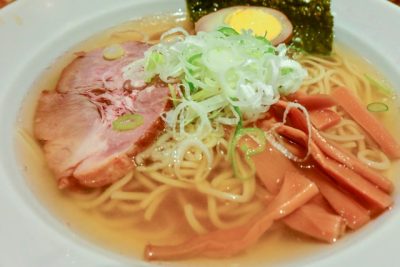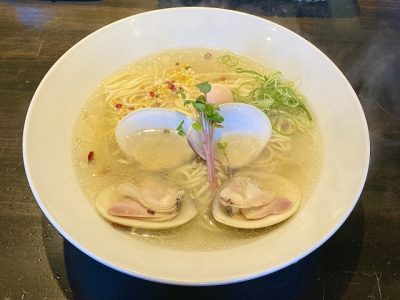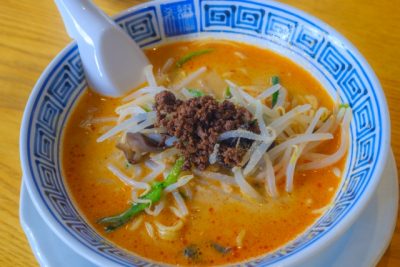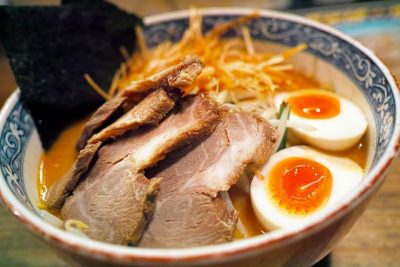How can you come to Japan and not eat Japanese ramen? Japanese ramen is popular not only in Japan, but also in Europe and America. With the opening of Japan’s free flow of foreign tourists to Japan on October 11, 2022, more and more tourists will try the authentic Japanese ramen when they visit Japan. However, I believe there are many people who only know that Japanese ramen is famous, but do not know which ramen store to choose, what flavors and ingredients to choose, or the etiquette of eating ramen in Japan.

This article will introduce you to must-eat Japanese ramen, Japanese ramen restaurant recommendations, ramen eating etiquette, everything you want to know about Japanese ramen here.
What are the types and the toppings of Japanese ramen?
The soup of Japanese ramen
The source of the complex flavors of Japanese ramen is the variety of soup bases and ingredients. Although many regions in Japan have their own typical soup base, there may be subtle variations depending on each restaurant. This variation is probably the reason why Japanese ramen is so popular all over the world, as well as the different flavors brought by different ingredients.
Japan Pocket Wifi Rental
UNLIMTED DATA SIM CARD
Japan Travel Prepaid SIM card
However, although the soup base of Japanese ramen is very rich, the basic soup base can be divided into four categories: soy sauce, pork bone, salt flavor, and miso. In addition, as customers change and the ramen industry develops, other flavors based on these four types of flavors have been developed.
「soy sauce ramen(Shoyu Ramen)」

Soy sauce soup base is the most representative ramen soup base in Honshu, and it is also the oldest flavor of Japanese ramen. When Chinese people came and brought Ramen to Japan in the early years, most of the ramen was made with soy sauce soup and chicken bone broth. Therefore, soy sauce ramen is also directly called “Chinese ramen” in some restaurants.
The special feature of soy sauce ramen is the brownish-yellow soup base.
「pork bone broth ramen(Tonkotsu Ramen)」

The pork bone ramen originated in Kyushu, Japan, and the soup base is made of pork bones boiled for a long time, showing a rich white color and a relatively more mellow taste with a unique aroma.
As for the toppings, some simple ramen noodles are served with only small onions, while others are served with barbecued pork(Chashu), fungus and other side dishes.
A representative one is the Hakata ramen in Kyushu.
「salt-flavor ramen(Shio Ramen)」

Salt-flavored ramen has a history second only to soy sauce ramen. The soup base is usually chicken broth or pork bone broth with a savory sauce, and the soup base is clear and light in taste, making it easiest to highlight the flavor of the broth itself.
It is generally believed that the origin of salt-flavored ramen is Hokkaido, and the most famous salt-flavored ramen is Hakodate Ramen.
「miso ramen」

Sapporo, Hokkaido is currently famous for its miso ramen. The soup base is made by simmering pork bone broth with vegetables, and the soup is made with miso. The soup base of miso ramen has a richer and richer taste due to the addition of traditional Japanese miso sauce.
When it comes to toppings, additional vegetables and meat are recommended, but of course, corn and cream are also good friends of miso ramen.
「Seafood ramen/fish ramen」

Seafood-based ramen is a new ramen soup base that is different from the four major ramen soup bases. The soup is a mixture of sardines, jack mackerel, bonito, shibori, or dried swordfish, sea bream, shrimps, kombu (Japanese kelp), and dried small fish, etc. Some of the ramen is made with fish powder to enhance the flavor of the seafood.
「Tantan Noodles」

Tantan Noodles originally originated in Sichuan, China, but when it came to Japan, the chefs adapted the original taste of Tantan Noodles to suit Japanese tastes. Currently, most of the Tantan Noodles you can eat in Japan are based on a sesame sauce soup base, sprinkled with a little red oil, and are slightly spicy with a strong aroma.
The side dishes are mostly seasoned pork strands, bean sprouts, and some restaurants may add a little dried bamboo shoots.
Common toppings of Japanese ramen
Japanese ramen is usually served with some toppings to enhance the flavor of the ramen. Some of the toppings that are usually included are
BBQ pork, seaweed, bean sprouts, bamboo shoots, cabbage, chicken, boiled egg, minced garlic, fish plate, green onion (both green and white), corn kernels, snow cabbage, potatoes, stewed meat, etc.
According to the survey, the top three favorite ingredients are barbecued pork, boiled eggs and bamboo shoots. In addition, green onion is also one of the most popular toppings in Japan.
Ramen flavors from all over Japan
The top three ramen places in Japan are Sapporo Ramen in Hokkaido, Hakata Ramen in Fukuoka, and Kita Ramen in Fukushima. In addition, the following places are also famous for their Japanese ramen.
- Asahikawa Ramen (Hokkaido)
- Tokyo Ramen (Tokyo)
- Yokohama Family Ramen (Kanagawa)
- Kyoto Ramen (Kyoto)
- Wakayama Ramen (Wakayama)
- Kumamoto Ramen (Kumamoto)
- Nagasaki Ramen (Nagasaki)
- Okinawa Ramen (Okinawa)
Each local ramen in Japan has its own representative taste.
For example, Sapporo Ramen in Hokkaido is famous for its miso ramen. Therefore, the popularity of miso ramen in Hokkaido and the northeastern part of Japan is much higher than that of other ramen flavors.
By the way, Hakodate, also in Hokkaido, is the birthplace of salt-flavored ramen.

The most popular type of ramen in Kanto is soy sauce ramen, although there are many people who also like other flavors of ramen. The Kanto region is the birthplace of soy sauce ramen, but because people from all over the region come together, there are many regional ramen stores and they are very popular.
The most popular area for salt-flavored ramen is the Kinki region of Japan. There is a saying in Japan that “関西は薄味 (Kansai region has a light taste),” so it is for this reason that salt-flavored ramen, which is refreshing and crisp, is popular in Kansai.
In the Kyushu region (Fukuoka is a typical region), the ramen with thick soup is preferred. However, in Oita, Saga, Okinawa and other prefectures, the unexpected miso ramen is also very popular.
Ramen etiquette that you should know before going to a Japanese ramen store
Everyone must order a bowl of noodles
Although it may be a bit beyond the limit for small eaters to finish a bowl of ramen, it is absolutely forbidden for two people to order and share a bowl of ramen in Japanese ramen stores.
If you really can’t eat a normal bowl of ramen, you can tell the clerk when you order that you want a “麺少なめで(small amount of noodles)”.
Order through vending machine
Some ramen stores may be able to order through communication with the staff, but more ramen stores have a ramen vending machine outside the door or at the entrance, where customers can pay in advance for the corresponding ramen voucher according to their preferences and give it to the staff when ordering.
There may be a long line in front of the vending machine afterwards. It is generally recommended to start thinking about the ramen you want to eat while standing in line, rather than waiting until you are in front of the vending machine. This will take more time, and in the eyes of the Japanese, it is rude to cause trouble for the people behind you.
Don’t stay too long at the ramen store
Ramen stores are usually small, and many of them have only bar seats and a few tables. Therefore, when you get your ramen and finish it, you should leave quickly to make room for the person behind you.
Also, if the ramen is cold, it may not taste as good. In order to enjoy the authentic Japanese ramen, you should eat it quickly while it is still hot.
Eating ramen noodles with a sucking sound
I believe many people know that there is an unwritten custom in Japan that allows noodles to be eaten with a sucking sound, and there is a rumor that the louder the sucking sound is, the more it shows the customer’s love for the food and appreciation for the person who prepared it.
This is not incorrect, because you can hear noodles being eaten everywhere in Japanese ramen stores. However, there are many young Japanese people nowadays who think that this kind of sucking sound is very impolite. Therefore, if you come to a Japanese ramen store, it is acceptable to make a snorting sound or not, and you can enjoy the delicious Japanese ramen at your own pace.
Top 10 Japanese ramen stores
We have collected the top 10 ramen stores on 食べログ/Tabelog, a famous Japanese food rating app, so if you are in Japan, you can try the ramen that the locals love according to this ranking!
Table source:https://tabelog.com/ramen/rank/
| Rank | Restaurant | Area | Tabelog Scores | Price |
|---|---|---|---|---|
| 1 | らぁ麺 飯田商店 | Yukawara | 4.10 | ¥1,000~¥1,999 |
| 2 | らぁ麺や 嶋 | Nishi-Shinjuku Gochome, Nakano-Shinbashi, Hatsudai | 3.99 | ¥1,000~¥1,999 |
| 3 | Homemade Ramen 麦苗 | Omorikaigan, Omori, Tachiaigawa | 3.98 | ¥1,000~¥1,999 |
| 4 | 中華蕎麦 とみ田 | Matsudo | 3.97 | ¥2,000~¥2,999 |
| 5 | 宍道湖しじみ中華蕎麦 琥珀 | Zoushiki | 3.96 | ¥1,000~¥1,999 |
| 6 | 中華そば 深緑 | Takasaka | 3.96 | ¥1,000~¥1,999 |
| 7 | 麺屋一燈 | Shinkoiwa | 3.95 | ¥1,000~¥1,999 |
| 8 | 中華そば 多賀野 | Ebara-nakanobu、Nakanobu、Togoshi-kouen | 3.95 | ~¥999 |
| 9 | Ramen FeeL | Hinatawada、Ishigamimae | 3.95 | ¥1,000~¥1,999 |
| 10 | 銀座 八五 | Higashi-ginza、Shin-Tomicho、Tsukiji | 3.94 | ¥1,000~¥1,999 |
What’s more: Left or Right? Japanese Escalator Etiquette

GetAround Japan is your number one travel guide, providing the latest information on visiting and living in Japan, with tips on what to eat, things to do, and places to stay.
Whether you’re planning for a trip far in the future, or already in Japan in need of some fresh ideas, our archive of posts will help you find the best way to fill your time and get the most out of your travel experience.
We provide you updates on serious policies that affect visitors and foreign residents while also keeping things light and fun with articles on quirky trends and pop culture.
How do we know how to provide visitors the information they need? Our affiliate company CDJapan Rental provides WIFI and Sim Card rentals to thousands of visitors to Japan every year. In other words, we are constantly in touch with and listening to the voices of our customers, and infuse our blog with the information they ask us for.
For inquiries, contact us here
=Company Information=
CDJapan Rental (Neowing Corporation) 1-10-15-3F Nihonbashi Horidome Chuo, Tokyo 103-0012, Japan
Japan Pocket Wifi Rental
UNLIMTED DATA SIM CARD
Japan Travel Prepaid SIM card




